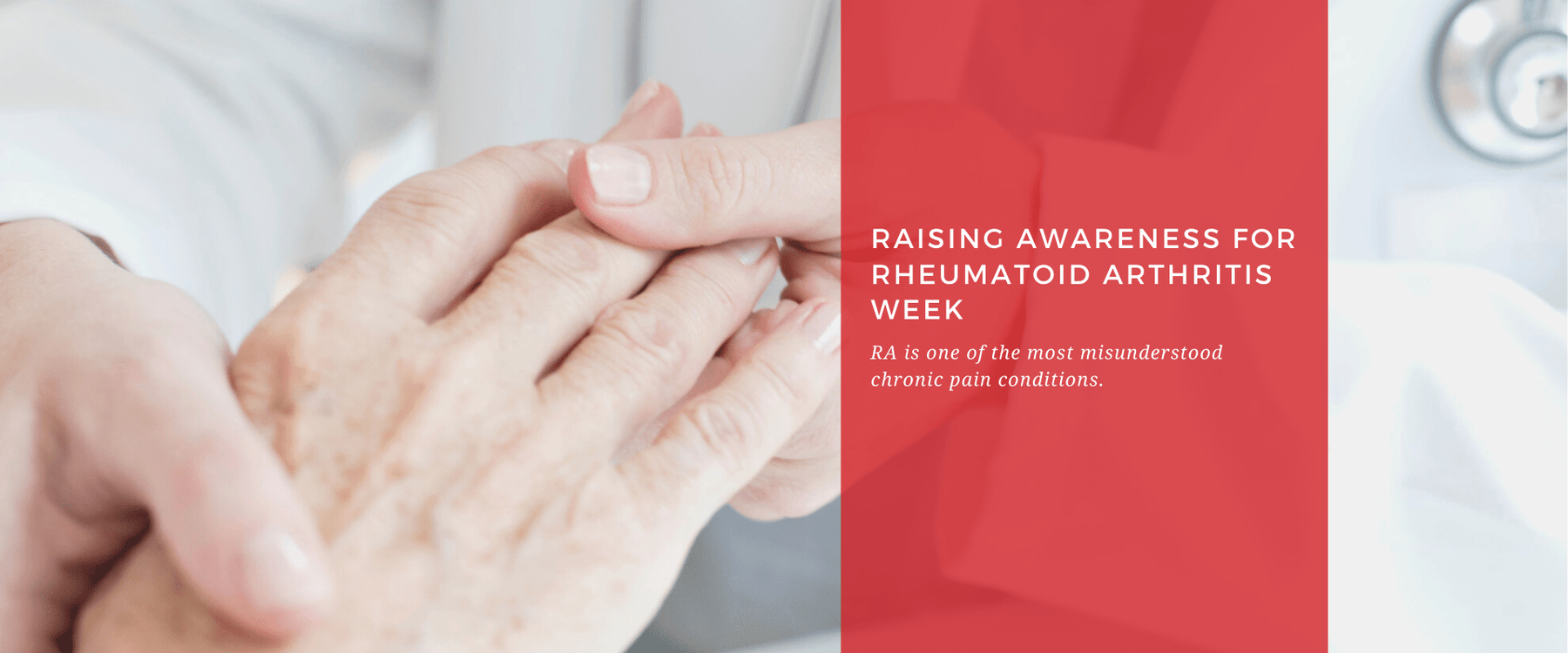With over 1 million orders

Is Rheumatoid Arthritis a Disability? RA Patients Shed Light On What It's Is Really Like
Is Rheumatoid Arthritis (RA) a Disability? Rheumatoid arthritis (RA) is a painful autoimmune disease that mistakenly attacks the lining of the joints causing inflammation and stiffness.

Unfortunately, RA is one of the most misunderstood chronic pain conditions.
Because of its name, people assume it only affects your joints. (Not true.)
People also generally assume it can be managed the same way as osteoarthritis. (It’s not as simple and straightforward as that, sadly.)
And even now, most people are surprised to hear that people under 60 suffer from this condition (patients typically get diagnosed between 30-60.)
In the spirit of creating awareness and trying to answer the question 'is rheumatoid arthritis a disability", we turned to the Dr. Arthritis Patient Network and gathered the top 10 misconceptions about RA to shed light on what it's really like to live with RA.
1. RA is the same as your grandparent’s arthritis
What your grandparents probably suffered from is osteoarthritis (OA)–the most common kind of arthritis—that is characterized by the natural wear and tear of joints. RA (which is the second most common form of arthritis) is the result of your autoimmune system going on overdrive and mistakenly attacking your own joints. This then leads to joint pain and overall inflammation that can cause joint erosion and even permanent damage to your joints and internal organs.
— Monica A.
2. RA only affects your joints
Unlike OA, RA sufferers have to deal with chronically elevated inflammation levels that can cause problems beyond just joints. This can include eye, skin, and major organs—usually the lungs and heart. In fact, heart disease is the leading cause of death for people with RA. Additionally, because RA tends to affect normal immune function, it also increases RA patients’ exposure to infections such as pneumonia, UTIs, and sinus infections.
— Victoria K.

3. Pain is the only thing RA patients have to deal with
Pain is a given for RA sufferers—but perhaps even more debilitating than pain is the fatigue. This level of exhaustion often leaves us feeling weak, but not sleepy. Even so, this is a level of tiredness that can’t be sorted by a good night’s sleep or a nap. It tends to exacerbate pain symptoms, and makes it hard to concentrate on anything else, prompting us to withdraw from our daily routine.
— June J.
4. RA symptoms are obvious and visible
Everyday, we deal with aching, stiff joints, fatigue and a host of other symptoms that are unfortunately not always tangible to anyone but ourselves. To RA sufferers, our symptoms are real and oftentimes can be very overwhelming. But it’s hard to explain the impact these symptoms have on our day to day life. It’s not uncommon for people around us—friends, family, colleagues, employers—to expect more from us because we come off as able-bodied individuals.
– Jen I.
5. RA is an ‘old person’s disease’
RA can strike anyone at any age. True, most RA sufferers begin to show signs of the disease between the ages fo 30 and 60, but it’s not uncommon for people to get diagnosed as children or in their teens or early 20s.

– Mariz A.
6. Diet and lifestyle changes don’t affect RA
Outside of pursuing early and aggressive treatment for RA, your diet and making significant lifestyle changes can make a huge difference for your symptoms. While it’s often different for every patient, an anti-inflammatory rich diet rich in antioxidants and omega-3 fatty acids tend to help minimize internal inflammation. Avoiding food known for triggering flares also helps.
– Cristine Q.
7. Treating RA is simple and straightforward
RA can be very hard to diagnose. Early symptoms often mimic other diseases and sometimes, it doesn’t even show up in general blood work.
They also say the first year of diagnosis is often the hardest for newly diagnosed RA patients—this is usually true. While there are numerous treatment options, what might work for one RA patient may not necessarily work for another, even if you have the same diagnosis. It’s hard to find the right treatment that will work for you and there’s a lot of trial and error during the first year as you try to find the right cocktail that will work for you.
– Nelson A.
8. Exercise will make your symptoms worse
On the contrary, staying active helps a lot with disease management. It’s important to choose low-impact activities however that won’t put too much pressure on your already painful joints. Walking, swimming, gentle stretching, cycling—all these can help with joint mobility and weight management. Be very conscious about not overdoing it as well as this might cause a flare.
– Mhya A.
9. Once treatment is underway, RA can easily be managed
Early, aggressive treatment is still the best way to keep RA under control and minimize joint damage—but RA pain and other symptoms don’t stop—even after you’ve found the best treatment combo. There are some days that are worse than others, but make no mistake, the pain, discomfort, fatigue are always there. Mornings can be especially difficult because that’s when our joints feel the most stiff.
– Martin J.
10. Weather affecting joints is a myth
Science has yet to definitively explain why this happens, but there’s a lot of anecdotal evidence to support that changes in barometric pressure tends to be felt by arthritis sufferers. Sometimes, our joints ache when it’s hot and humid; other times I feel the rain coming in my bones. While there’s no definitive pattern, one thing is for sure, weather does indeed affect our joints as RA sufferers.
– Andy F.
So Is Rheumatoid Arthritis a Disability?
The experience of rheumatoid arthritis varies significantly among individuals, and, indeed, the condition can result in profound disability. However, the concept of disability transcends a simple yes-or-no proposition, requiring a conversation that includes the social aspects of the term. In this broader view, the defining element isn't merely the physical limitations, but also how well society accommodates these individuals. From this perspective, the disability arising from rheumatoid arthritis could be enhanced by societal restrictions.
The classification of rheumatoid arthritis as a disability is not merely a reflection of the individual's symptoms severity, but also of the socio-environmental context. There's no simple answer to the question 'is rheumatoid arthritis a disability.' This issue is complex and should be taken into consideration with its medical, social, and personal implications.
Nonetheless, it's crucial to underscore the resilience and adaptability of those living with this disease. As we witness advancements in treatments, make strides in social awareness, RA patients continue to demonstrate that they can lead fulfilling lives, thereby challenging and reshaping traditional notions of disability. In this light, it becomes clear that while we must always be cognizant of the struggles faced by those with chronic illnesses, there is also ample room for recognizing their strength and resilience.
To truly understand what RA patients go through, click on the post below and delve deeper into their world:
Rheumatism vs Arthritis: Explaining RA to People Who Don’t Have It
